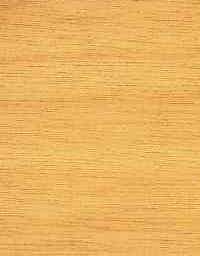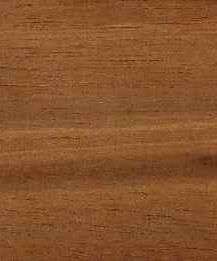 
Samfona (Chrysophyllum perpulchrum)
Family: Sapotaceae
Common names: Aninguerirouge, Longui, Mkuti, Monkey star apple, Mubakampungu, Mululu, Munyamata, Samfona, Samfonda
Distributed in: Cameroon, Guinea, Ivory Coast, Liberia, Tanzania, Uganda (Africa)
Distribution overview: West Africa, from Liberia to Zaire, Uganda, and Tanzania.
Common uses: Balusters, Barge fenders, Bedroom suites, Boat building (general), Boxes and crates, Building construction, Building materials, Cabinetmaking, Carvings, Casks, Chairs, Chests, Concealed parts (Furniture), Construction, Crossties, Decorative plywood, Decorative veneer, Desks, Dining-room furniture, Docks, Dockwork, Domestic flooring, Dowell pins, Dowells, Drawer sides, Excelsior, Figured veneer, Fine furniture, Floor lamps, Flooring, Flooring: industrial heavy traffic, Furniture , Furniture components, Furniture squares or stock, Furniture, Harbor work, Hatracks, Interior construction, Joinery, Kitchen cabinets, Light construction, Marine construction, Piling, Plywood, Poles, Railroad ties, Toys, Turnery, Vats, Veneer
Product sources: The ITTO reports that timber production from the species is not regular. It is exported only in low volumes.
Environment profile: Vulnerable in parts of its natural habitat
Tree size: Tree height is 40-50 m
Colors: the heart isYellow to golden-yellow to orange, Yellowish tanand the sapwoodWhite, Yellow.The grain isStraight, the textureMediumand the lusterLustrous
Natural durability: Susceptible to insect attack, Very little natural resistance
Silica Content: Siliceous
Kiln Schedules: Drying (speed) is fast
Drying Defects: Moderate twist/warp
Ease of Drying: Requires a controlled drying to prevent shrinkage
Tree Identification: Bole/stem form is straight
Boring: Requires strong hold to prevent chipping of exit holes
Cutting Resistance: Cutting Resistance with green wood is easy
Gluing: Glues well
Mortising: Support material during mortising to prevent break out.
Moulding: Good finishing
Movement in Service: Good finishing
Nailing: Holds nails well, Pre-boring recommended
Planing: Planes well, to a good finish
Resistance to Abrasion: Fair resistance
Resistance to Impregnation: Sapwood is permeable
Resistance to Splitting: Satisfactory
Response to hand tools: Fairly Difficult to Difficult to Work
Veneering qualities: Easy to cut, Suitable for slicing
Steam bending: Good
Screwing: Good screw holding properties, Screwing yields good results;
Polishing: Very Good to Excellent;
- Numerical data Metric
- Numerical data English
- Strength properties
- References
 |
 |
 |
 |
| Item |
Green |
Dry |
Metric |
| Specific Gravity |
|
|
|
| Density |
|
801 |
kg/m3 |
| Bending Strength |
920 |
1414 |
kg/cm2 |
| Crushing Strength |
468 |
718 |
kg/cm2 |
| Hardness |
|
451 |
kg |
| Impact Strength |
|
|
cm |
| Shearing Strength |
|
164 |
kg/cm2 |
| Stiffness |
134 |
155 |
1000 kg/cm2 |
| Tangential Shrinkage |
|
|
% |
| Radial Shrinkage |
3 |
|
% |
| Weight |
721 |
576 |
kg/m3 |
| Maximum Load |
|
|
cm-kg/cm3 |
| Toughness |
|
|
cm-kg |
| Static Bending |
|
|
kg/cm2 |
|
 |  |  |  | | Item | Green | Dry | English | | Bending Strength | 13089 | 20116 | psi | | Density | | 50 | lbs/ft3 | | Hardness | | 995 | lbs | | Maximum Crushing Strength | 6670 | 10224 | psi | | Shearing Strength | | 2340 | psi | | Stiffness | 1919 | 2205 | 1000 psi | | Weight | 45 | 36 | lbs/ft3 | | Radial Shrinkage | 3 | | % | | Tangential Shrinkage | 6 | | % | |
Max. crushing strength = high
Density (dry weight) = 46-52 lbs/cu. ft.
Shrinkage, Tangential = large
Shearing strength (parallel to grain) = medium
Density (dry weight) = 38-45 lbs/cu. ft.
Bending strength (MOR) = high
Shrinkage, Tangential = very small
Shrinkage, Tangential = small
Shrinkage, Radial = small
Shrinkage, Radial = moderate
Shrinkage, Radial = fairly large
Modulus of Elasticity (stiffness) = low
Modulus of Elasticity (stiffness) = high
Hardness (side grain) = soft
Density (dry weight) = 53-60 lbs/cu. ft.
Bending strength (MOR) = very high
Bending strength (MOR) = medium
Shrinkage, Radial = very small
Shrinkage, Radial = large
Modulus of Elasticity (stiffness) = medium
Density = very high
Compression strength (parallel to grain) = very high
Bolza, E., Keating, W.G.,1972,African Timbers - the Properties, Uses and Characteristics of 700 Species,C.S.I.R.O. Div. of Building ResearchEggeling, W.J.,1940,Indigenous Trees of Uganda,Govt. Printer Entebbe UgandaITTO.1986.Tropical Timber Atlas, Volume 1 - Africa.International Tropical Timber Organization (ITTO) and Centre Technique Forestier Tropical (CTFT, 45bis, Avenue de la Belle Gabrielle, Nogent-sur-Marne Cedex, France.Keay, R.W.J.1989. Trees of Nigeria.Revised Version of Nigerian Trees. Clarendon Press, Oxford.Kryn, J.M., Forbes, E.W.,1959,The Woods of Liberia,U.S.A. Department of Agriculture,Forest Products Laboratory, Madison,,Report No. 2159Murira, K.,1984,Natural Durability Tests of Tanzanian Timbers 1955 - 1982,Tanzania Forestry Research Institute, Timber Utilisation Research Centre,,Moshi.Pardy, A.A.,1951,Notes on Indigenous Trees and Shrubs in Southern Rhodesia - Pterocarpus,angolensis,Ministry of Agriculture and Lands S. Rhodesia Bulletin No.1592Sallenave, P.,1955,Proprietes Phyiques et Mecaniques des Bois Tropicaux de l'Union Francaise,C.T.F.TTack, C.H.,1969,Uganda Timbers,Govt. Printer UgandaTakahashi, A.,1978,Compilation of Data on the Mechanical Properties of Foreign Woods (Part,III) Africa,Shimane University, Japan, Research Report on Foreign Wood No. 7Tanzania Forestry Department,1962,Timbers of Tanganyika - Chrysophyllum perpulchrum,Tanzania Forestry Department, Utilisation Section, Moshi - Timbers of,TanganyikaWCMC.1992.Conservation Status Listing - Trees and Timbers of the World.World Conservation Monitoring Center - Plants Programme, Cambridge, CB3 ODL, United Kingdom.
|









